CHANDRASEKHAR
Subrahmanyan Chandrasekhar 1910-1995
A native of Tamil Nadu, Chandrasekhar was born in Lahore (British India), October 19, 1910.
Fellow in Chennai (formerly Madras) India, Chandra obtained his doctorate in 1933 at the age of 22 years at Trinity College, Cambridge University in the UK, under the direction of Ralph Howard Fowler (1889-1944).
He got a job at the University of Chicago in 1937 and U.S. citizenship in 1953. This is one of the major theoretical astrophysicists of the 20th century.
His research had oriented on the evolution of stars.
It is he who found the limit (Chandrasekhar limit), from which a white dwarf becomes unstable. Above, she collapsed in neutron star and explodes as a supernova. In 1930, Chandrasekhar, who was 20 years, calculates the limit while traveling by boat to Bombay.
He discovers that the famous Eddington and Fowler had forgotten to consider the effects of relativity in their calculations.
His awards are numerous:
- Price Rumford in 1957 (work on radiative transfer), - Bruce Medal in 1952,
- Gold Medal of the Royal Astronomical Society in 1953, - National Medal of Science in 1966
- Henry Draper Medal in 1971,
- Nobel Prize in Physics in 1983 with William Fowler for his theoretical studies of physical processes governing the structure and evolution of stars.
- Copley Medal in 1984, Passion for astrophysics and quantum theory, he attended the age of 17 at a conference of Arnold Johannes Wilhelm Sommerfeld (1868-1951).
The young Chandra discovered quantum mechanics of Heisenberg and Schrödinger.
Sommerfeld has a decisive influence on his career as an astrophysicist.
Cambridge is the best university for Theoretical Astrophysics, thanks to the astrophysicist Arthur Stanley Eddington (1882 - 1944) known for his work on Einstein's general relativity and the structure of stars.
This is Eddington who piloted the expedition of the solar eclipse of 1919, which verified the predictions of Einstein's theory. Ralph Howard Fowler had studied the density of white dwarfs.
Chandrasekhar decided to use special relativity to refine the calculations of his these director.
Thus he finds the maximum mass for a white dwarf, the famous limit beyond which a star, having exhausted its fuel, collapses under gravity.
Eddington is opposed for a long time to Chandra and in 1939 he wrote a book about the structure of the stars who closed definitively the question to the community of obedient scientists. Yet the conclusion of Chandra was a harbinger of the existence of black holes.
In 1939 Chandrasekhar publishes the first of its treaties, "Introduction to the Study of Stellar Structure."
In 1943 he published another treatise "Principles of stellar dynamics".
In 1950, "Radiative Transfer" deals with the theory of stellar atmospheres.
In 1961 he published Hydrodynamic and hydromagnetic Stability.
After the discovery of quasars and CMB, Chandrasekhar published several articles bright, on the theory of relativistic stars and their stabilities.
Neutron Stars, Black Holes and Quasar are his favorite subjects of study.
In 1983, he sums up all his work in "The Mathematical Theory of Black Holes."
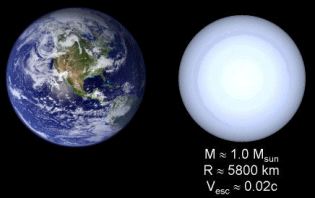
Image: size of Earth compared to a white dwarf.
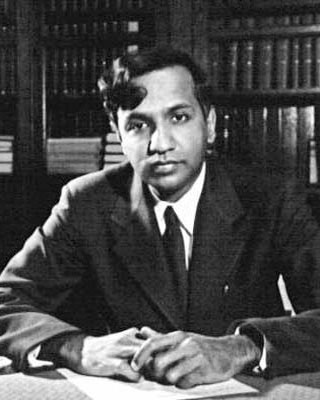
Image: Subrahmanyan Chandrasekhar (1910 - 1995), called Chandra, is the nephew of Nobel laureate Chandrasekhara Venkata Raman physics laureate in 1930.
Nobel Prize himself in 1983, his name was given to the asteroid Chandra (1958) and X-ray Space Telescope put into orbit by the Space Shuttle Columbia July 23, 1999. He was a member of the Royal Society from 1944 until his death.
He died at 84, August 21, 1995 in Chicago in the United States.
Articles on the same theme
1997 © Astronoo.com − Astronomy, Astrophysics, Evolution and Ecology.
"The data available on this site may be used provided that the source is duly acknowledged."
How Google uses data
Legal mentions
English Sitemap − Full Sitemap
Contact the author
 The Secrets Exchanged by Galileo and Kepler Were Coded
The Secrets Exchanged by Galileo and Kepler Were Coded
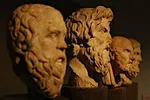 Influential Greek Thinkers
Influential Greek Thinkers
 What do we know about Pythagoras (≈570-495 av. J.-C)?
What do we know about Pythagoras (≈570-495 av. J.-C)?
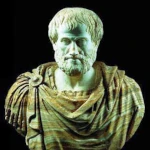 The philosophical characteristics of Aristotle (384 - 322 BC)
The philosophical characteristics of Aristotle (384 - 322 BC)
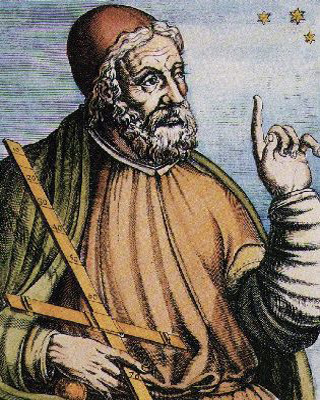 The world of Ptolemy (90-168)
The world of Ptolemy (90-168)
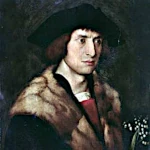 Nicolas Copernicus: The Revolutionary Who Placed the Sun at the Center of the Universe
Nicolas Copernicus: The Revolutionary Who Placed the Sun at the Center of the Universe
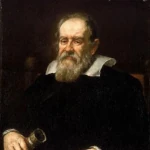 Galileo (1564-1642) and the moons of Jupiter
Galileo (1564-1642) and the moons of Jupiter
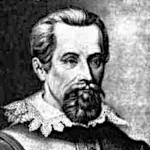 Kepler (1571-1630), planets follow ellipses
Kepler (1571-1630), planets follow ellipses
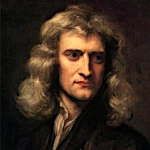 Newton (1643-1727) and gravity
Newton (1643-1727) and gravity
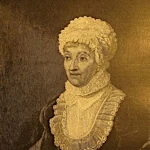 Caroline Herschel: The First Professional Female Astronomer
Caroline Herschel: The First Professional Female Astronomer
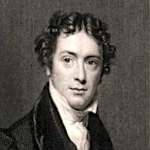 Michael Faraday, Self-Taught Genius: The Origins of Electrodynamics
Michael Faraday, Self-Taught Genius: The Origins of Electrodynamics
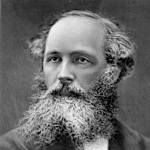 James Clerk Maxwell: The Physicist Who Unified Light and Electromagnetism
James Clerk Maxwell: The Physicist Who Unified Light and Electromagnetism 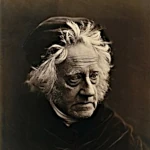 John Herschel: The Pioneer of Stellar Astronomy and Scientific Photography
John Herschel: The Pioneer of Stellar Astronomy and Scientific Photography 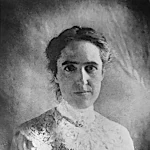 Henrietta Swan Leavitt (1868-1921), A Pioneer in Astronomy
Henrietta Swan Leavitt (1868-1921), A Pioneer in Astronomy
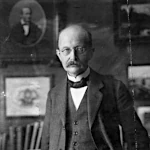 Max Planck: The Father of Quantum Theory
Max Planck: The Father of Quantum Theory
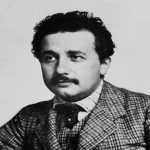 Einstein (1879-1955) and the concept of time
Einstein (1879-1955) and the concept of time
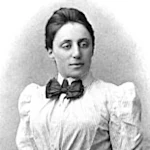 Amalie Emmy Noether (1882-1935), the Mathematician Who Revolutionized Algebra
Amalie Emmy Noether (1882-1935), the Mathematician Who Revolutionized Algebra
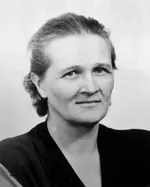 Cecilia Payne (1900-1979), the Scientist Who Revealed the Composition of Stars
Cecilia Payne (1900-1979), the Scientist Who Revealed the Composition of Stars
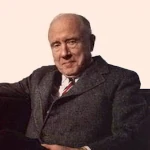 John Archibald Wheeler: The Visionary of Black Holes and Quantum Gravity
John Archibald Wheeler: The Visionary of Black Holes and Quantum Gravity
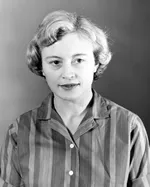 Margaret Burbidge (1919-2020): An Exceptional Journey in Astrophysics
Margaret Burbidge (1919-2020): An Exceptional Journey in Astrophysics
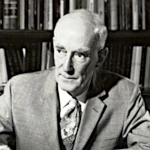 Jan Hendrik Oort: The Astronomer Who Revealed Our Galaxy's Structure
Jan Hendrik Oort: The Astronomer Who Revealed Our Galaxy's Structure
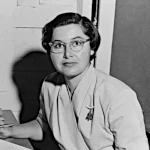 Vera Rubin (1928-2016), Revealer of the Invisible, Pioneer of Dark Matter
Vera Rubin (1928-2016), Revealer of the Invisible, Pioneer of Dark Matter
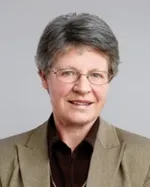 Jocelyn Bell Burnell (1943-), the Scientist Who Discovered Pulsars
Jocelyn Bell Burnell (1943-), the Scientist Who Discovered Pulsars
 Quotes about Science
Quotes about Science
 Babylonian Astronomy and Astrology: History and Contributions
Babylonian Astronomy and Astrology: History and Contributions
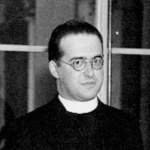 Georges Lemaître: The Primeval Atom at the Origin of the Cosmos
Georges Lemaître: The Primeval Atom at the Origin of the Cosmos